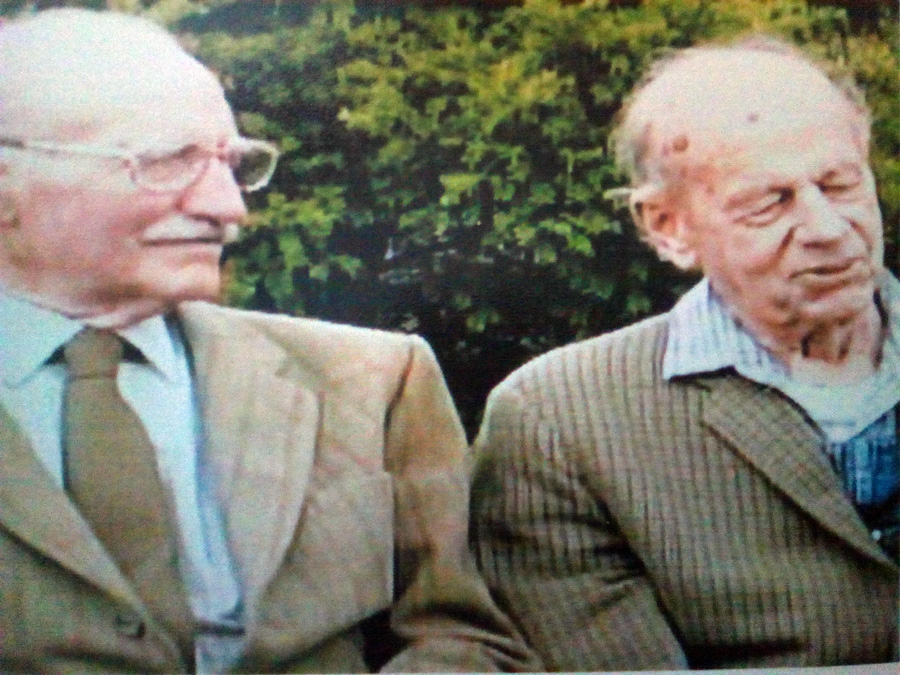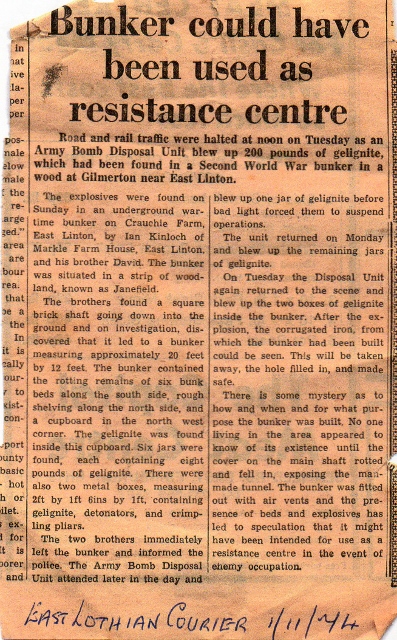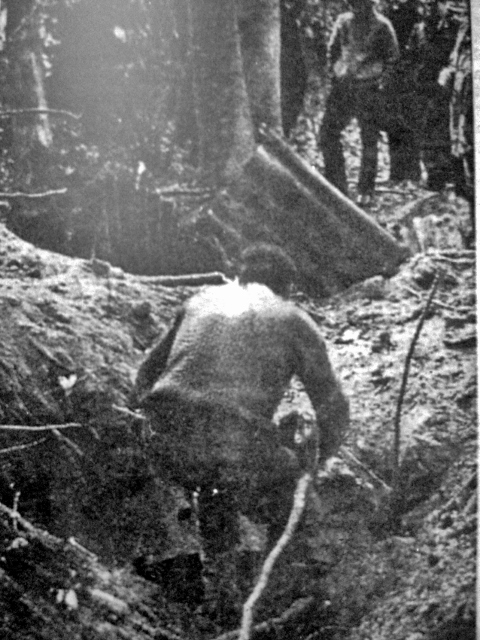East Linton is a small town just north of the A199 (former A1) road, between Haddington and Dunbar.
| Name | Occupation | Posted from | Until |
|---|---|---|---|
| Sergeant George Davidson | Farmer |
1941 | 1944 |
| Corporal Adam Middlemas | Farmer |
1941 | 1944 |
| Private Jock Grant | Market gardener |
1941 | 1944 |
| Private Will Johnston | Farm worker |
1941 | 1944 |
| Private Willie Oldershaw | Market gardener |
1941 | 1944 |
| Private Charles George Spence | Farmer |
1941 | 1944 |
| Private James "Jim" Watt | Joiner |
1941 | 1944 |
The Patrol OB was a standard "Elephant" type shelter located in the corner of Janefield Wood, approximately one mile north east of East Linton. It measured 20 feet by 12 feet and was accessed by a vertical brick built shaft. There were 6 bunks and shelving with a cupboard to store arms and ammunition.
It was destroyed by the army in October 1974 after 100 lbs of explosives was found inside when it partially collapsed. The area is now flat open fields with no remains.
East Linton Patrol
Military targets would have included RAF East Fortune.
Local targets would have included the A1 main England to Scotland road that ran through East Linton (now bypassed), along with the East Coast main railway line between England and Scotland the possible invasion beaches to the east and north and local telegraph and electricity poles.
In the event of the Germans landing some of the Patrol were to head north west up to Edinburgh and then try to cause damage to Rosyth Naval Dock Yard. This was a long way from their OB and probably a one way trip.
Some of the Patrol went to Coleshill House to train, Sergeant Davidson definitely went.
They also trained at Monksford House Stables the Auxiliary Units H.Q for the area, Melville House in Fife, Otterburn Ranges in Northumberland with the army and on the beaches north of Dunbar.
Weapons issued to the Patrol included .38 Smith & Wesson pistols, Fairbairn Sykes fighting knives along with lots of explosives including dozens of sticky bombs.
The Patrol came third in the Border Area shooting competition during July/August 1943. Sergeant Davidson gained individual first place which meant he represented the Area in the all Britain finals at Coleshill. He came third overall.
They went to the Isle of Wight as the island garrison along with many members of 201 Battalion for the first two weeks of June in 1944. Here they patrolled the downs at night.
George Davidson's fighting knife and Countryman's Dairy 1939 were donated to the Edinburgh Castle museum by Jack Tully-Jackson who was friends with the members of the Patrol.
Charlie Spence was almost killed in a training exercise, just missed being hit by a moving train. He also had a very accurate Smith & Wesson pistol.
Local historian Jack Tully-Jackson interviewed George Davidson and Charlie Spence about their war time efforts and there is a DVD called "The Fighting Farmers" which tells their story.
The National Archives in Kew ref WO1993388,
Hancock data held at B.R.A
Peter Forbes and David Blair
Charly Spence
Jack Tully-Jackson


